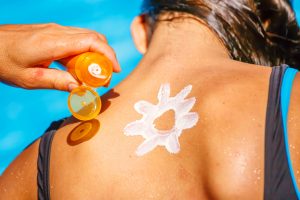written by home doctor team
It’s well and truly heating up in Queensland! The sun is out and the rest of the year is only going to get hotter.
While you may be enjoying all the Queensland sunshine has to offer, it’s important to stay sun smart. Prolonged exposure to harsh ultraviolet radiation (UVR) from the sun comes with a number of risks.
What is UVR?
UVR is the part of sunlight which causes damage to the skin and can lead to risks such as cancer. You can’t see or feel UVR, it can even be reflected by light shining off sand, snow, concrete and water.
There are three main types of UVR:
- UVA – causes ageing and wrinkling of appearance.
- UVB – causes sunburn and risk of skin cancers.
- UVC – doesn’t reach the earth’s surface but it can be produced artificially.
What is the UV Index?
The UV index is an international standard of measurement, measuring the strength of ultraviolet radiation. The sun’s ultraviolet strength is measured on a scale of 1 to 11 with the higher number meaning the faster your skin will burn.
In Queensland the UV index is minimum of 3 all year round! Considering you’re at risk of skin damage when the UV Index is 3 or above sun safety is something all Queenslander’s should know about.
What damage can exposure to UVR cause?
- Sunburn
Unfortunately something we are probably all too familiar with in the Queensland sun. Sunburn is the result of high UVR killing or damaging cells in the upper skin later. Mild sunburn results in reddening of the skin shortly after exposure and fades within a few days. More severe sunburn can be extremely painful, causing the skin to blister and peel.
- Premature ageing
Overexposure to the sun can promote premature ageing of the skin. With UVB stimulating proliferation of the outer layer of skin and UVA penetrating into the deep layers. This results in a gradual loss of elasticity. UVR can also dry out the skin making it coarse and leathery.
- Melanoma
The biggest risk of exposure to high UVR is melanoma, with Queensland having the highest rate of melanoma in Australia.
Melanoma is a form of cancer which develops in the skins pigment cells. It is the most serious form of skin cancer and grows quickly spreading to the lower dermis (layer of skin), the lymphatic system or bloodstream if left untreated. From here it can spread to other organs such as the lungs, liver, brain and bone.
- Non-melanoma skin cancer
Non-melanoma skin cancers are generally found on parts of the body which are exposed to sunlight. These are basal cell carcinomas and squamous cell carcinomas. Basal cell carcinomas are most common, appearing as a red lump or scaly area. Squamous cell carcinomas appear as a thickened, red, scaly spot and sometimes metastasize.
- Eye damage
UVR can also damage the eye, causing:
- Photokeratitis (inflammation of the cornea)
- Photoconjunctivitis (inflammation of the conjunctiva)
- Pterygium (cosmetic blemish on the surface of the eye)
- Cataracts (damage to proteins in the eye’s lens and accumulation of pigment that may cause blindness).
How to stay protected outdoors
In the Sunshine State our UVR is high enough to cause damage to the skin all year round. That’s why it is important to remember these 5 sun safety recommendations:
- Slip on a shirt – Wear clothing with an ultraviolet protection factor (UPF) of at least 30.
- Slop on sunscreen – Apply water resistant sunscreen which is broad-spectrum with a minimum SPF of 30.
- Slap on a hat – Wear a well-fitting hat which protects the face, ears and neck.
- Seek shade – Where possible.
- Slide on sunglasses – Specifically with an Eye Protection Factor (EPF) of 10 and which meet the Australian standard AS/NZS 1067:2003.





